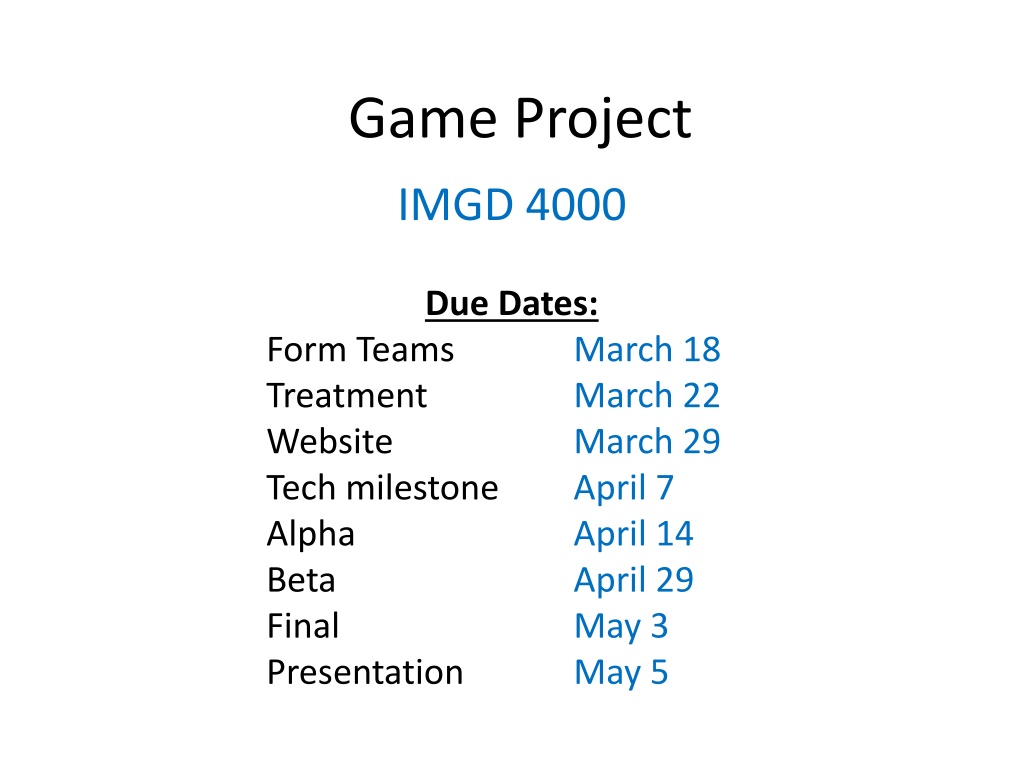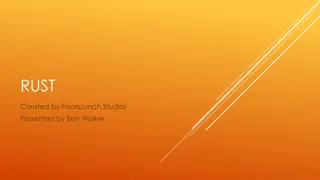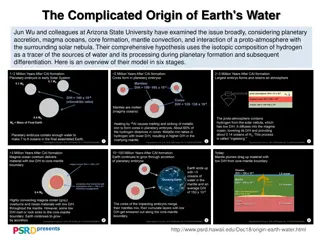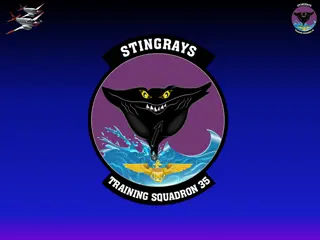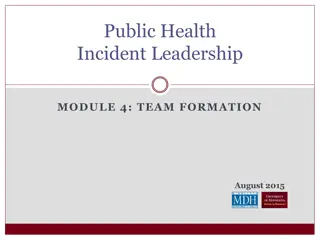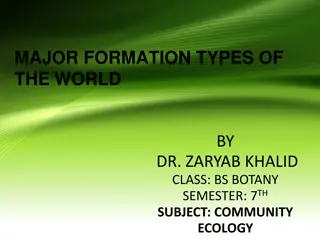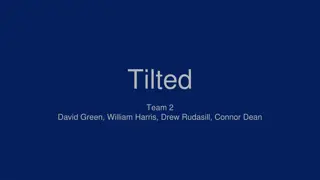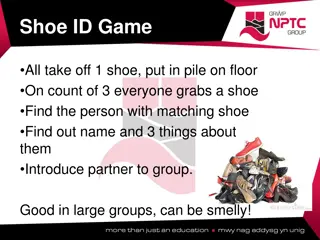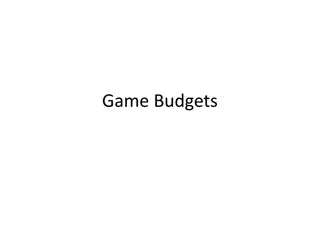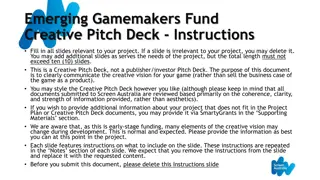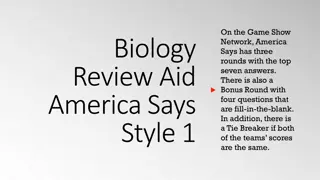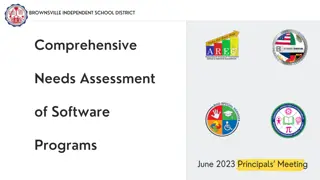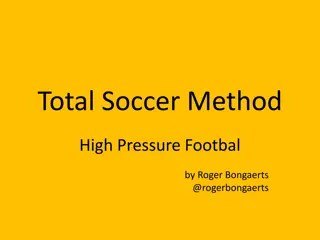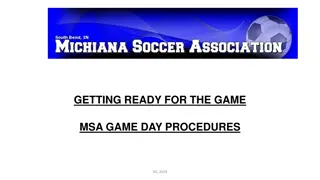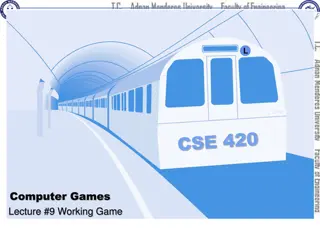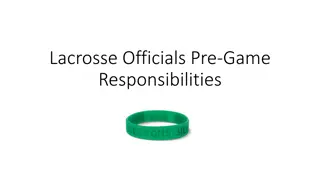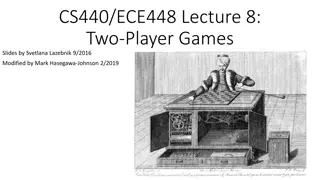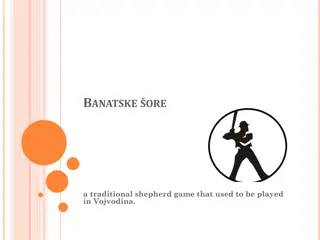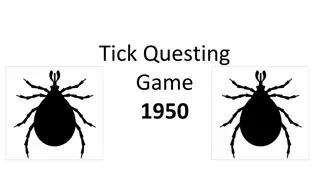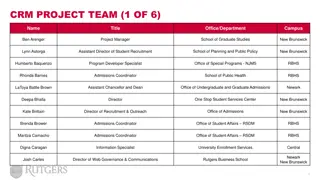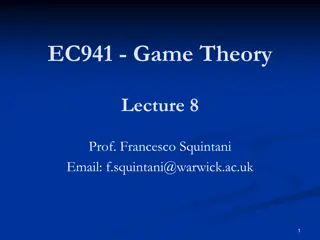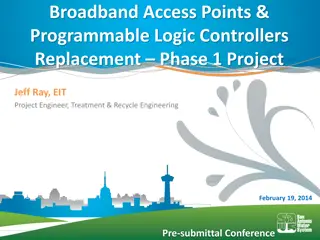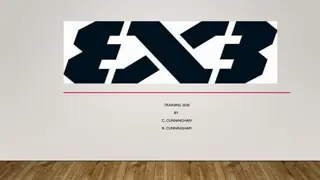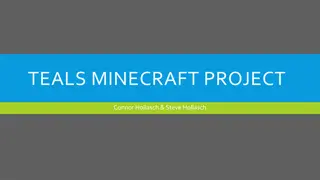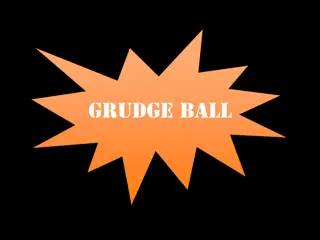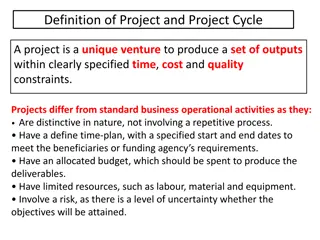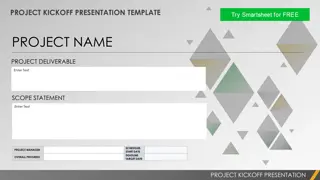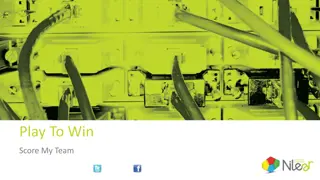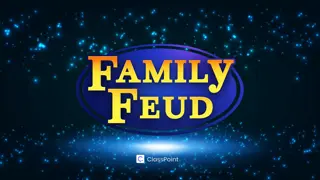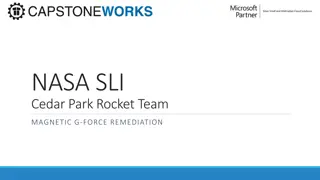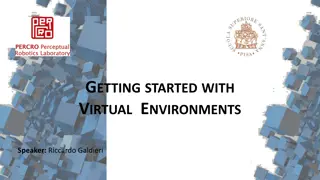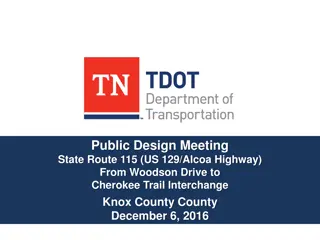IMGD 4000 Game Project: Overview and Team Formation Details
Create a game project using UE4 in a team of artists and programmers. Form teams with specific constraints and required elements. Important dates include milestones for alpha, beta, and final presentations. Detailed instructions provided for team formation, design constraints, and project overview.
Download Presentation

Please find below an Image/Link to download the presentation.
The content on the website is provided AS IS for your information and personal use only. It may not be sold, licensed, or shared on other websites without obtaining consent from the author. Download presentation by click this link. If you encounter any issues during the download, it is possible that the publisher has removed the file from their server.
E N D
Presentation Transcript
Game Project IMGD 4000 Due Dates: Form Teams Treatment Website Tech milestone Alpha Beta Final Presentation March 18 March 22 March 29 April 7 April 14 April 29 May 3 May 5
Overview Build a game! Using UE4 In a team of artists + programmers Of your own choosing, but with constraints Specific tech required Specific art elements Milestones provided (as per previous slide) (Details next)
Form Teams (1 of 2) First Wednesday! 2-2:50pm, FL222 All IMGD 4500 and IMGD 4000 must attend! You should pair up with 1 other tech before You will then pair up with 2 other artists Team of 4 Note, artists will be supporting 2 teams! There is a 2-1 ratio of IMGD 4000 to IMGD 4500 But using same art assets for both teams
Form Teams (2 of 2) Fill out: What is your favorite game(s) to play? In your view, what game has most impressive art and/or tech? What game development role(s) are you most interested in this term? What are your strongest game development skills? What genre(s) of game are you most interested in this term? What roles do you usually play in teams you are part of? (visionary/detail person/community builder/get-stuff-done-er/other) When you have an assignment due, are you more likely to get it done a week early, stay up all night before it is due, or something else? How important is this class to you and how does it fit in with your other commitments this term? Use to help make compatible team (don t worry about ideal team) Staff will be on hand to help facilitate matchmaking Outcome team members + email, team name to Farbrook and Claypool
Design Constraints (1 of 3) Game design is constrained In our case, for educational reasons In many cases, financial, legal, or market Setting, narrative, character personality, game mechanics are not constrained Designed by Art and Tech Not necessarily role of any one person
Design Constraints (2 of 3) The game must have 1+ fully-animated biped or quadruped character. Player avatar or NPC One central hero object 1stor 3rdperson Must be 3rdif animated character is hero One level Indoor or outdoor 3+ non-character objects 1+ moving (e.g., bird flapping, vehicle spinning wheels) All tech features: Physics Force-based steering Simple pathfinding State-based AI 5+ sounds 2 ambient, 3 triggered
Design Constraints (3 of 3) IMGD 4500 Artists produce: 2 rigged and animated characters (1 per student) 2 static models (1 per student) 2 static models with simple animations (1 per student) 1 environment, either interior or terrain 1 hero object (large, detailed static model that students work on together) 4-8 sound files, at least 2 triggerable and rest environmental Extra assets possible, but must be attributed!
Design Constraints Tech Options A grade on tech Excellent Soft Eng (modularity, documentation, testing) Each tech implements one (so, solo): 1. an advanced pathfinding feature 2. an advanced camera control feature 3. a non-trivial shader 4. flocking 5. procedural content generation 6. two-player networking - reuse character model for both players in first-person mode (can count for both) 7. another significant technical element requiring a comparable amount of programming (with prior approval of instructor)
Treatment Document (1 of 2) Short document providing information on game Where and when does game take place? Who/what are protagonist and adversary (which one is player)? Explain primary objective of player and how wins Explain the general game narrative (if any) in 1-2 paragraphs What is basic game mechanic? Is the game first or third person? Briefly describe each game asset Game Title Project Folder Name Group Leader (+ email) IMGD 4000 team (+ emails) IMGD 4500 team (+ emails) Elevator Pitch max 2-3 sentences, e.g., "A first-person shooter using rotten vegetables that takes place in the supermarket produce section. You win the game by hitting your opponent with a complete salad."
Treatment Document (2 of 2) Briefly describe tech in game Physics Force-based Steering Simple Pathfinding State-based AI Optional technical element(s), if any? Include all sketches, images, and concept art Due Sunday! Email PDF to Claypool and Farbrook Note, not a "contract", but chance for team to think through most aspects of game before starting!
Source Control As for Quickstart FusionForge Git or SVN Directory for assets (on right) Other folders for tech, as appropriate Help Artists, as needed Concept-art Text Images Character-sculpt Character-complete Animations Static-models Static Movable Hero-object Environment Audio Environmental Triggerable Final-game
Website For development of game Include information on right Hosting up to you (e.g., WPI) Consider links from past offerings D12 B12 Team (e.g., members, roles, contact information) Documents (e.g., game treatment) Artistic content (e.g., Concept Art, Model Renders) Releases (Tech, Alpha, Beta) Promotional materials (e.g., Trailer) Final game! Professional, outward representation of game development effort
Technical Milestone Short (~5 minute) demo in class Visiting Website Clicking on link Make sure to test ahead of time! As in real world , get only one shot at interview/funding README Describes technical components Attribute authors, if not equal Demonstrate implementation of: Basic physics (Rigid Body, Collider and Mesh Collider) Two force-based steering behaviors Basic A* pathfinding (see IMGD 3000 lectures) Hierarchical state machines
Alpha Release All required features implemented May not be working entirely correctly Game code tested to eliminate critical gameplay flaws Minor glitches/bugs present Compile cleanly, runnable May have separate levels for separate parts (e.g., some illustrating weapons, other bad guys) Not yet balanced, nor levels designed Placeholder assets ok (e.g., simple cube)
Beta Release Playable by users outside team No new features or major code changes Focus on fixing bugs that affect players Make it more playable/fun Compile cleanly and be runnable Separate features of game demonstrable Near-final versions of art-assets Fairly balanced, suitable for players of various skill levels, with only tweaks needed to make game more fair/fun
Final Release Your final release is like Beta, but With more bugs fixed With more balance Polish, polish, polish Don t forget opening/splash Don t forget credits
Presentation Present final game in class Intro Introduce team High concept of game Summary of major features core ideas Most time spent demonstrating game! (show, don t tell) Highlighting technical aspects needed as show them Both team members should talk Arrange in advance who says what Bring laptop/ test on podium computer ahead of time! Embarrassing things can happen when you don't try out! Total time 5 minutes Plan accordingly Practice! Many times content, timing and transitions down
Hints Consider design constraints Check out UE4 resources that we have collected If you find other really good ones, let us know! Design software classes Use iterative development Should always have build that compiles, plays Concentrate on core, then required, then desired (if time)
Submission TBD
Grading Treatment Web Tech Milestone Alpha Beta Final Final Quality 2.5% 2.5% 10% 20% 20% 35% 10% Rubric available online
